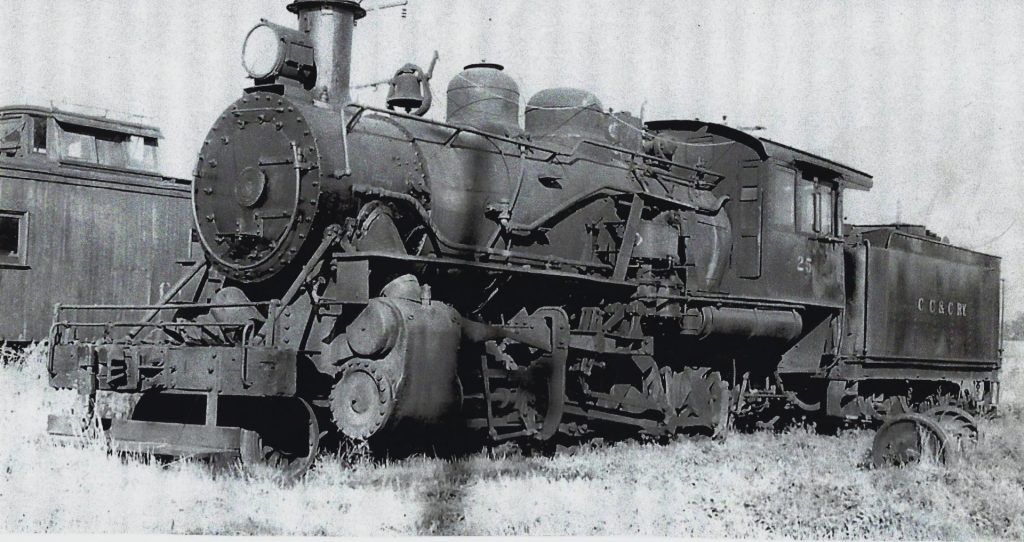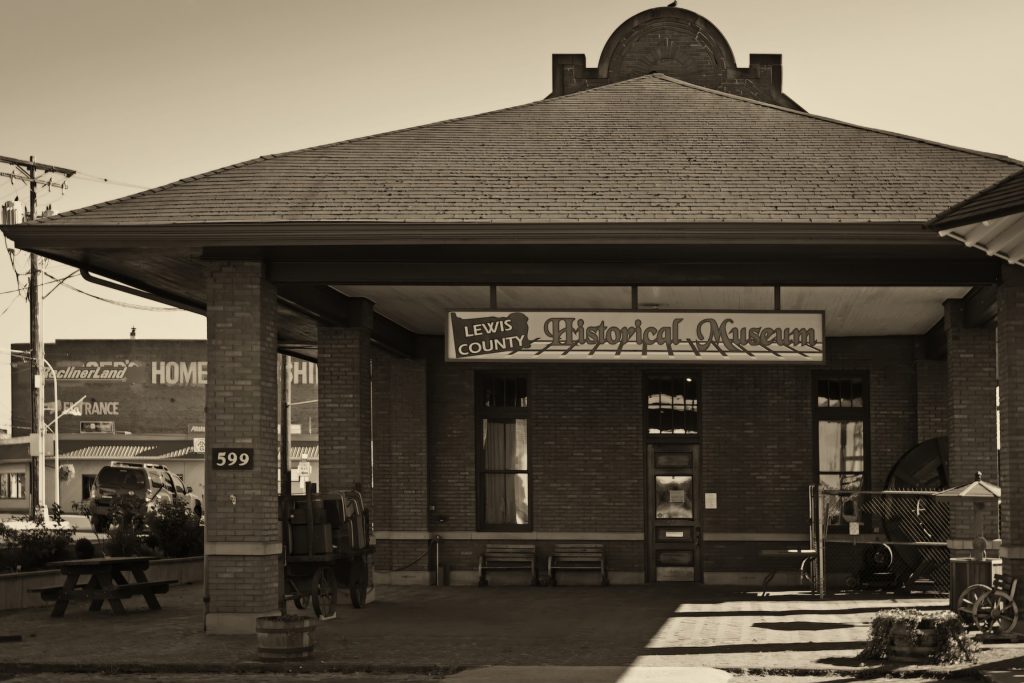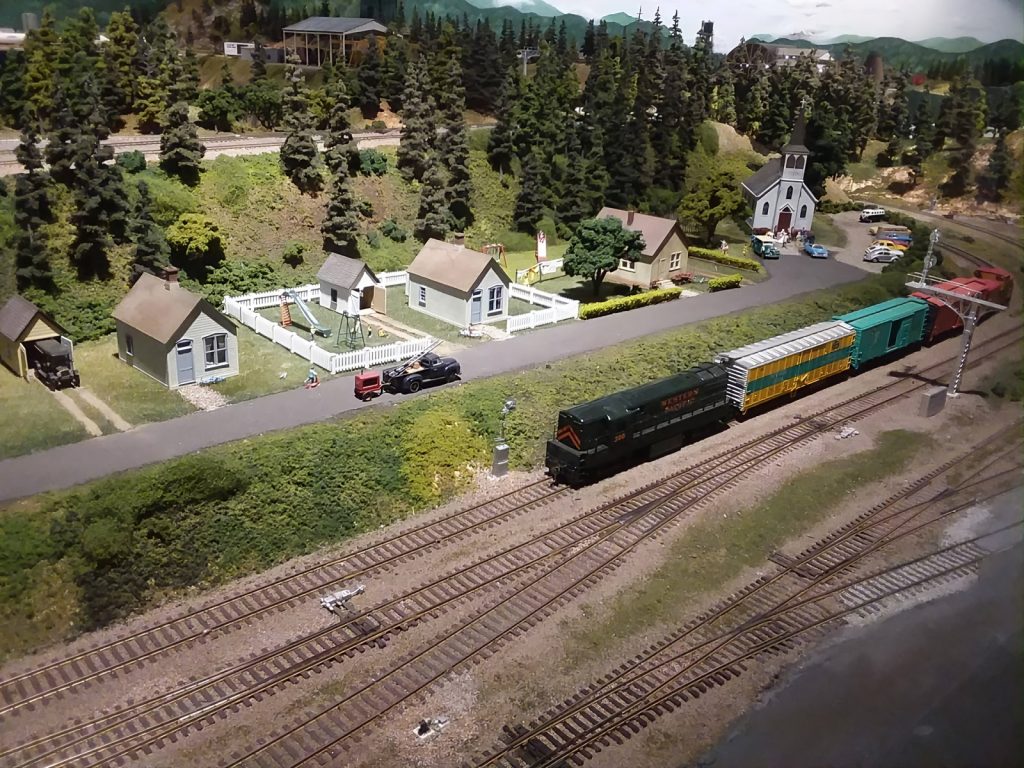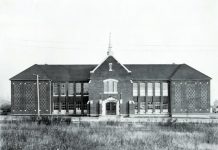Once upon a time, when the west was still wild yet ripe with endless possibilities, the land that made up Lewis County was a vast expanse, stretching from the verdant banks of the Cowlitz River in the south to the distance, icy shores north in Sitka, Alaska. Founded on December 21, 1845, it was a place where pioneers carved out a life from the raw earth, and as civilization crept westward and the territory grew, so did the need for connection.
In rode a steel horse, a mighty iron beast that promised to conquer the distance. With thunderous rhythm and billowing smoke, the railroad arrived, a lifeline stretching across the untamed landscape. At the heart of this new frontier stood the Chehalis Depot, a grand structure of brick and steel eager to welcome weary travelers and eager settlers alike as they made their way through up-and-coming Lewis County.

Riding the Rails Through History: The Story of the Northern Pacific Railroad’s Chehalis Depot
In the 1870s, the Northern Pacific Railway embarked on the ambitious project of constructing a rail line from Kalama to Tacoma. Initial plans for the line included plans for a depot in what was then Saudersville. The railroad requested a donation of land from Eliza Barrett, who at the time controlled over 300 acres of land in the region. Past attempts of exploitation had made Barrett a cautious businesswoman, and after having read the railroad’s proposal, she increased the price of her land.
While the railroad worked to negotiate with Barrett, citizens anxious for connection to the world beyond worked toward their own solutions. At a later town meeting, a gentleman reported that trains waved down by a red flag must stop. This resulted in many merchants buying red bunting as they took turns waving down passing trains. Thankfully, Saundersville became a regular stop in 1874, with Barrett having sold a few lots by the tracks where the farmers erected a grain storage warehouse.
This was replaced in 1890 by a wooden “regulation depot” for travelers. Its addition would mean a rapid transformation in the region. In 1897, the town’s name was changed to Chehalis, and now that timber and agriculture had means of transportation in and out of the city, it quickly grew into a commercial area, growing from approximately 2,300 residents at the turn of the century to 6,500 by the early teens.
It was evident that a new depot with a passenger station was needed to accommodate the growing community. In January 1912, the Northern Pacific announced plans to replace the old structure; however, bureaucratic hurdles and local mistrust significantly impeded construction. To assuage public concern, the railroad unveiled detailed specifications of the proposed depot, which included amenities such as a women’s retiring room, a men’s smoking lounge, a telegrapher’s room, and a central waiting area.
Constructed with fireproof materials like brick, cement, and stone, the depot was a testament to architectural ingenuity. Ultimately realized as the Chehalis Depot, this impressive Mission Revival-style building served as the Northern Pacific Railroad’s primary passenger and freight hub. Its rapid construction was made possible by a skilled workforce of approximately 500 specialists. The depot’s interior was a masterpiece of design, featuring terrazzo floors, tiled roofing, leaded windows, and extensive hardwood oak accents. The colossal structure, spanning over 300 feet, comprised five distinct sections connected by open-air breezeways.

Preserving a Piece of Transportation History: The Community Restores the Historic Chehalis Depot
The Chehalis Depot stood as a vital hub for the community until the economic shifts of the 1970s marked a turning point in its history. When several railroad companies consolidated into Burlington Northern Railroad in 1970, a wave of depot closures swept the nation, including Chehalis. Faced with the imminent demolition of this beloved landmark in 1973, local citizens, galvanized by the Lewis County Historical Society, initiated a fervent campaign to preserve it. The society, eager to expand its cramped museum facilities, saw the depot as an ideal new home.
Navigating a complex web of bureaucracy and public opinion, the group embarked on a determined quest to secure the depot’s future. Legal challenges were mounted to establish the building’s historical significance, and intense negotiations with Burlington Northern ensued. The railroad initially resisted, citing safety concerns and doubts about the community’s ability to maintain the structure. Undeterred, the Historical Society launched a grassroots campaign, garnering over 3,600 signatures on a petition to save the depot. Simultaneously, they sought federal support through Senators Warren Magnuson and Henry Jackson, who were championing legislation to preserve historic railroad depots.
A pivotal victory arrived in 1974 when the depot was listed on both the state and national registers of historic places. However, the battle was far from over. Burlington Northern persisted in raising safety concerns, prompting the county to erect a protective fence between the depot and the railroad tracks. Finally, in 1975, a breakthrough occurred when Senator Magnuson secured a lease agreement between Burlington Northern and Lewis County, designating the depot as a future museum.
The journey to transform the dilapidated depot into a thriving museum was arduous and costly. Extensive renovations were required to address structural issues, upgrade the electrical system, and create modern exhibit spaces. Through a combination of grants, community fundraising efforts, and volunteer labor, the Historical Society gradually brought the building back to life. Countless hours were dedicated to planning, fundraising, and construction, culminating in the grand opening of the Lewis County Historical Museum in September 1979. This monumental achievement was a testament to the community’s unwavering determination to preserve its heritage.
The depot’s rescue serves as a powerful reminder of the resilience and passion of the people of Chehalis. By transforming a once-threatened relic into a vibrant cultural center, they ensured that their community’s story would continue to inspire generations to come.

Travel Back in Time to the Golden Age of Rail at the Lewis County Historical Museum
Today, while the depot no longer echoes with the clamor of arriving and departing passengers, it remains a cornerstone of the community, although these days it’s a different type of gathering place. Once a platform for fleeting encounters amidst the hurried rush of wayward travelers eager to explore new land, the Chehalis Train Depot is now a destination for historical exploration, having been transformed into the Lewis County Historical Museum.
The museum’s large main gallery features rotating exhibits that pique the interest of a diverse audience. Past themes have explored the charm of antique dolls, delved into the history of hometown baseball, and showcased the intricate craftsmanship of antique clothing and quilts.
The Lewis County Historical Museum also features a variety of permanent exhibits. Visitors can explore the Chehalis and Cowlitz Indian Tribal Room, which showcases Native American artifacts and culture. A recreated 1900s kitchen and dining room offer a glimpse into daily life, while the blacksmith and saw filing shops demonstrate traditional trades. The Mulford Brothers Store exhibit provides a snapshot of rural general stores, and a model train display highlights the county’s railroad history. The museum gift shop is a haven for bibliophiles, offering a treasure trove of books authored by local talents. Souvenirs and other delightful trinkets round out the selection, providing mementos of a visit filled with historical exploration.

For railroad enthusiasts, a meticulously detailed HO-scale model railroad brings the region’s rail history to life. This detailed exhibit recreates the county’s rail network as it appeared in the early 1970s, showcasing major towns, rural communities, and the industries that once thrived along the tracks. Visitors can explore the intricate layout and even operate trains with interactive controls. The exhibit is a labor of love, meticulously crafted and maintained by the Lewis County Model Railroad Club. The club welcomes visitors every Friday afternoon, inviting enthusiasts to watch or even participate in the ongoing expansion of this impressive display.
Once a vital link to the nation’s rail network, the Chehalis Depot now serves as a tangible link to Lewis County’s rich history. Through its exhibits and collections, the Lewis County Historical Museum offers a unique opportunity to connect with the past as visitors step back in time and explore the stories that shaped our community.
Lewis County Historical Museum
599 NW Front Street, Chehalis
360.748.0831













































